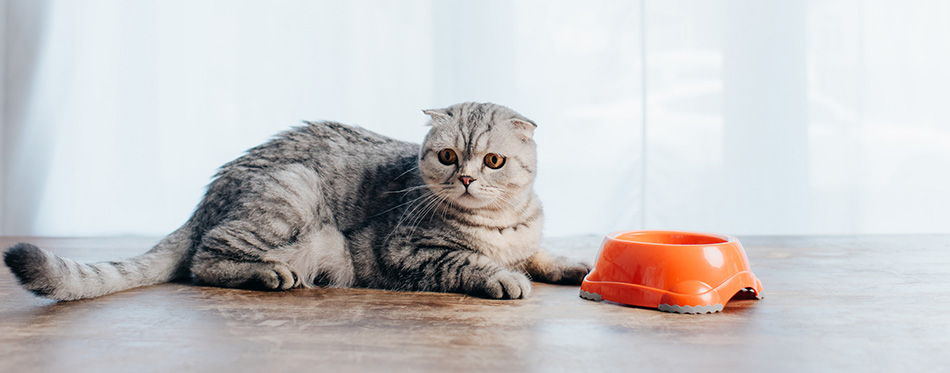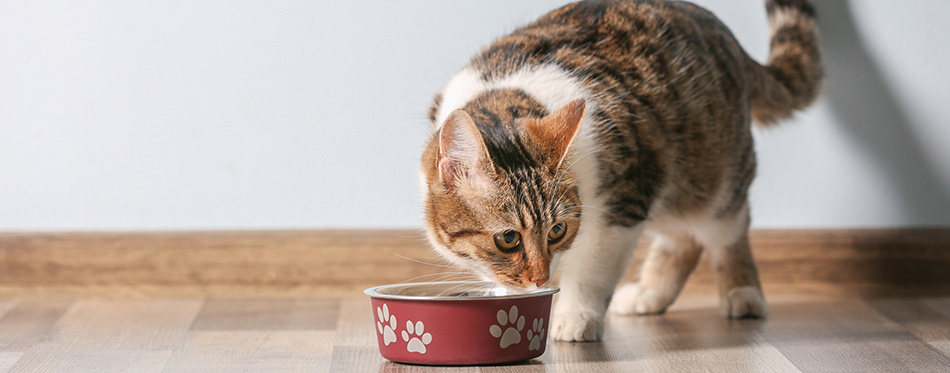Adopting a kitten is one of the most extraordinary and adventurous times in your life. Suddenly your home is filled with a little bundle of joy and energy. As time goes by, that little kitten quickly changes, as do their dietary needs. Selecting the ideal food for your growing cat can be a painstaking process, and it requires much more thought and education than just switching from kitten food to adult food.
A variety of factors must be taken into consideration, including their stage in life, general health, and their activity level. In this article, we’ll discuss how you can determine if your kitten is ready for adult cat food and the difference between kitten food and cat food. We will also discuss how to properly transition your little ball of love to the proper adult food to accommodate their ever-growing nutritional needs.

When Should I Make the Switch to Adult Cat Food?
Generally, 12 months of age is when most kittens will make the switch from kitten food to adult food. It’s at the 12-month mark when your kitten is officially classified as an adult cat. However, there are several factors to consider prior to making the switch. For one, your now adult cat should reach between 80% and 90% of its final weight before you make the transition to adult food. Depending on the weight factor, your kitten may be a little older or younger than a year when it reaches this mark and is ready to make the switch.
Similarly, certain feline breeds implement the change from kitten to adult food much later in life. For example, large breeds like the Maine Coon don’t reach adulthood until they are between 18 and 24 months. They need kitten food for much longer, and the weight factor shouldn’t be used when determining the proper time to introduce larger feline breeds to an adult diet.
What is the Difference Between Kitten Food and Cat Food?
It can be challenging to determine the exact difference between kitten food and cat food without first educating yourself. Most of the foods look the same, aside from a minor change in size. However, the actual difference between kitten and cat food is actually quite outstanding. The nutritional needs vary greatly between a kitten and an adult cat. The best food for kittens is formulated to provide their growing brain and body with all the nutritional requirements it needs, while adult cat’s nutritional requirements are quite different.
The key difference between kitten and cat food is the balance of proteins and fats contained within. Kittens require high amounts of protein and fat to help them grow, while adults significantly require less fat and protein. Adult cats also require fewer vitamins and minerals than their younger counter partner. Due to the lower nutritional content, it’s easy to think adult cat food isn’t very healthy, but that’s far from the truth. Adult cat food contains the precise ratio of nutrients to meet their needs, without all the extras found in kitten food. In fact, feeding an adult cat kitten food can result in health problems because they’re getting too much fat, which can lead to obesity and feline diabetes.
Check out our guides on Cat Food for Indoor Cats and Cat Food for Hairballs for more info.
Choosing the Right Adult Cat Food
Just one quick walk down the pet aisle and you’ll be presented with so many varieties of cat food that it’s hard to know where to start. However, the cat food you select for your pet is one of the most significant choices you’ll make for their overall health. You want well-balanced and free food from unhealthy fillers. When you choose the right food for your cat, they will thank you in the long-run with fewer health problems and an overall happier demeanor.
While choosing the most quality adult food for your cat, you want nutritionally sound food that is free from unnatural ingredients. Sadly, some of the feline foods found on the market today contain questionable ingredients. Just recently, a drug called Pentobarbital, which is used to euthanize animals, was found in two different brands of animal food, which resulted in two deaths. Similarly, when animals are slaughtered for food production, lean meat is cut off for human consumption.
The remaining carcass (organs, bones, blood, beaks, etc.) are what goes into your pets’ food and labeled as “by-product meal” Luckily, there are many trusted suppliers on the market who offer quality cat food made from farm fresh ingredients without the added organs, blood, or drugs. By doing your research and familiarizing yourself with the many food suppliers, you’ll feel confident in buying from a trusted source.
Another question people frequently propose is if they should select dry or canned food. The answer is easy, use both. Both dry and canned food provides adequate nutrition for your pet, while each offers its own benefits. Some felines prefer dry food, while others gravitate towards wet. When choosing between the two, give your cat what it likes, which will make feedings easier and your housemate one happy feline. A good tip regarding canned cat food is its use in order cats that’ve lost their appetite. The scent of canned food is stronger, which will help encourage them to eat. For a wider selection of choices, check out our dry cat food guide.

How to Easily Make the Transition from Kitten to Cat Food?
It’s vital that any changes to your cats’ diet are done gradually. Changing their diet instantly can lead to food aversions, not to mention foodborne allergies. Your kitten has been on the same diet since they first switched to solids. Adult cat food is a different composition, flavor, and an entirely new experience for your cat. The slower you introduce the food, the easier they will take to it. For more options, check out our detailed review of hypoallergenic cat food.
It’s advised that the transition is completed over the course of around 7 days. When it’s time to start the transition, you’ll want to replace one-6th of your kitten’s food with cat food on the first day. Then over the course of the week, you’ll continue replacing one-6th of the food with adult food, until the 7th day when the kitten food will be removed completely. The gradual process will also allow your cat’s stomach to adjust to the new ingredients, lessening the chances of them getting sick from the new food.
Conclusion
Your cat’s nutrition is an integral part of their growth, development, and overall health. Placing your cat on the most nutritious and appropriate diet from kitten to adulthood will ensure a lifetime filled with happiness and health. By using the tips outlined in this article, you can easily choose the best food for your adult cat and make the transition as easy and stress-free as possible. It’s important to remember that if your cat experiences any serious problems after the food change, consulting with your veterinarian is your best bet for detecting food allergies and determining any ingredients that may not agree with your cat.

